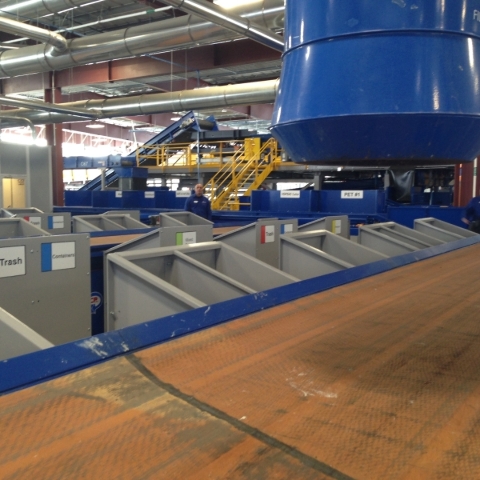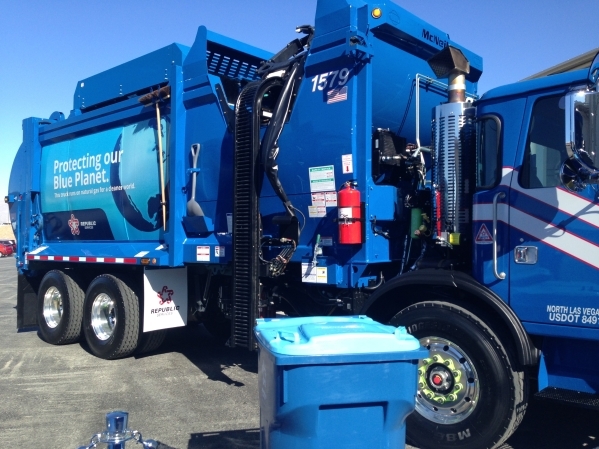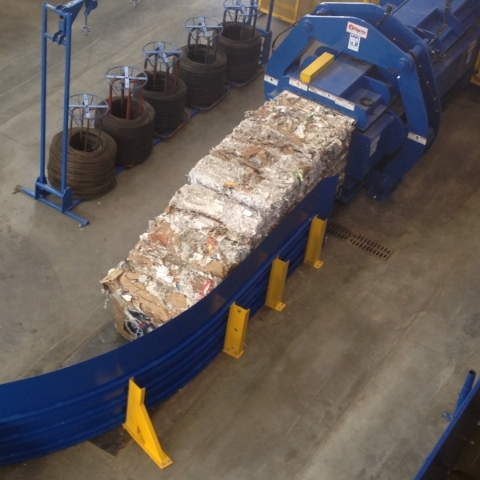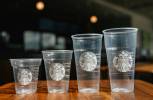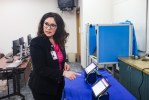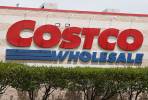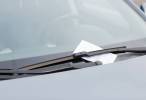Recycling: Are we asking the right questions?
This month marks the opening of North America's largest and smartest residential recycling center in North Las Vegas. This seemingly good news brings up many questions about recycling. Is it working? Is it worth it? And can we all feel good about recycling?
The opening day ceremony appeared to be a symbol of movement in a sustainable direction. Everything looked clean and blue. There were sparkling new compressed-gas trucks parked outside the blue-carpet entrance. Before cutting the ribbon, politicians and business people spoke of the high volumes of waste that would go through the 5 new, single-stream, state-of-the-art optical sorters.
I can't deny it felt good to see and hear so much support from our community for a needed sustainable practice. However, I also couldn't help but consider why we need this facility, and what may transpire because of it.
How are we recycling?
The U.S. has 9,800 different municipalities operating individual recycling plans, all with different rules. Nearly a dozen states, like California have container deposits and give cash refunds for bottles. Some areas, like Portland, Ore., even have composting services.
Despite these disjointed efforts, the U.S. is still at a stagnate level of recycling. On average, only 30 percent of recyclables are recycled. Why is that?
Many say it's too time-consuming to separate trash. For apartment and condo-dwellers, it's a hassle to transport your recyclables to a pick-up location. Some say they don't trust that their recyclables are being recycled and not just going to the landfills.
Republic Services' new facility was built mainly to accommodate residents, so we no longer need to separate our recyclables. We can put cans, plastic, paper, cardboard and glass into one recycle bin.
The magic happens at the recycling center much like the Oompa Loompa scene in "Willy Wonka & the Chocolate Factory." Our recyclables travel along conveyor belts, allowing for manual laborers to hand pick out the undesirables.
The waste then moves along a ladder of rotating shafts, hoppers and drum feeders, where metal detectors eject tin items into appropriate containers. Plastic is sorted by its grade, cardboard and paper are separated, heavy glass falls into its container below and even plastic bags are sucked up to be reprocessed, all in a matter of two to three minutes per load. All this, so we don't have to separate.
The plan is that eventually all residential homes will have a dedicated recycle bin. The hope is that all customers will put only tin, plastic, paper, cardboard and glass in this container. This should decrease the amount of trash going into the other bins and eventually to the landfills.
The representatives from Republic Services explained that if you put nonrecyclables, such as food or liquids, in your recycle bin, then any wet fiber contents like cardboard and paper will become contaminated and will go to the landfill. He suggested "dilution is the solution" as an easy motto to remember to keep your recyclables dry.
Unfortunately, making it easier for people to put all their recyclables in a single container sometimes unexpectedly results in less recycling. Individuals are more likely to throw in nonrecyclables contaminating the load. For example, when the Washington, D.C., area switched from separate recycle containers to a single recycle container, they saw a 50 percent increase in contamination of recyclables.
The cost and benefits of recycling
Some naysayers claim it is not worth it. While it is true that recycled aluminum sees a far greater return than, say, glass in study after study, recycling is more beneficial than producing things from virgin materials. The reduction in energy consumption is 30 percent for glass, 40 percent for paper, 60 percent for steel, 70 percent for plastics and 95 percent for aluminum. This, in turn, reduces greenhouse gas emissions as well as conserves natural resources including water and can potentially reduce the amount of trash going to our landfills.
During Republic Services' opening day ceremony, my first question to our tour guide was, "What happens after everything is separated and bundled?" The answer: 90 percent is sold to China.
Aluminum is still reprocessed in the U.S., as well as glass. However, mixed paper, cardboard and plastics are primarily shipped outside the U.S.
According to Daniel Marks from Berg Mill Supply Co., a waste broker in Los Angeles, China is the market. Even with low gas prices and China's declining economy, it is still more cost effective to ship to China than transport to Tucson, Ariz. With massive amounts of Chinese imports entering our ports daily, what better way to fill up those empty ships returning to China than with our trash.
A few years ago, China started a Green Fence policy, aiming to avoid becoming the world's dump site, after its citizens started noticing fish dying in its rivers. The Green Fence initiative involves inspecting imported containers, mainly from North America and Europe, for contamination. Inspectors will send back containers, at the senders' expense, if they are found to be contaminated.
Atoning for our sins
Can we all feel good about recycling? Well, sure, but that doesn't solve the root problem. That problem is overconsumption. Recycling is a Band-Aid for the hemorrhaging of stuff we purchase. I had a sinking feeling leaving the opening ceremony that if we feel confident about recycling, it may lead to avoiding an introspective look at our consumption habits — or worse, unconsciously giving us license to consume even more.
If we examine just our water bottle usage, imagine the decrease in plastic bottles if we drank from reusable containers.
We have become a "throw-away society." Republic has accommodated our unwillingness to transport and separate our recyclables. Let's help this system along by putting only dry recyclables in our recycle bins.
Learning to recycle everything that is recyclable is vital. At the same time, however, we need to remember that decreasing our consumption levels is paramount.
"Sentiment without action is the ruin of the soul," said Edward Abbey, American author and essayist noted for his advocacy of environmental issues.
— Mary Beth Horiai has split her adult life between Japan and Southern Nevada. In Las Vegas, Horiai worked for the nonprofit U.S. Green Building Council of Nevada. A graduate of UNLV, she was trained as a speaker for The Climate Reality Project. For more information and links to additional resources relating to this column, visit www.driverofchange.net.



